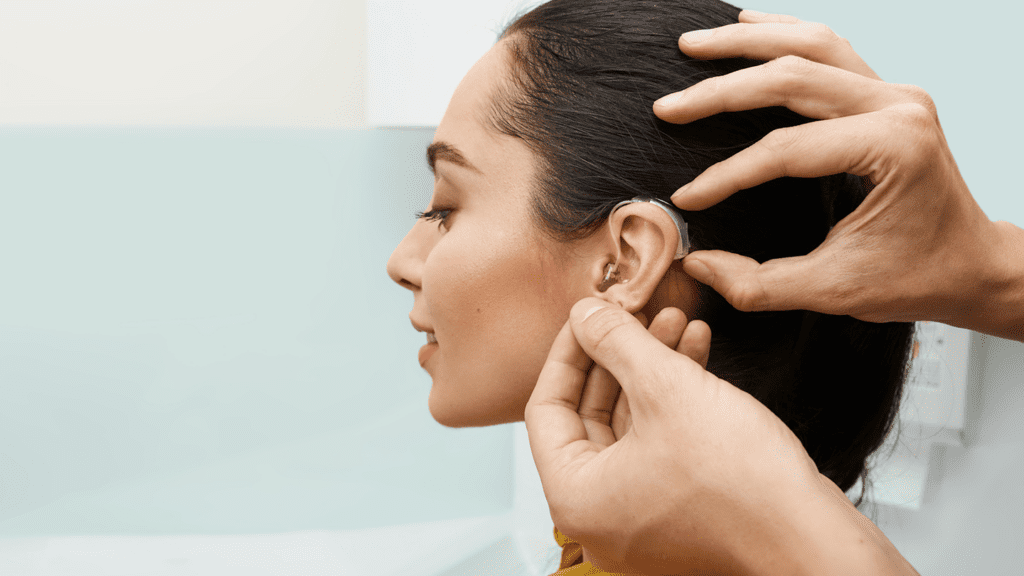Yes, there are several different types of hearing aids, each designed to meet the specific needs and preferences of individuals with hearing loss. The choice of hearing aid type depends on factors like the degree and type of hearing loss, lifestyle, and personal preferences. Here are some common types of hearing aids:
- Behind-the-Ear (BTE) Hearing Aids:
- These hearing aids are worn behind or on top of the ear.
- They consist of a plastic housing that holds the electronic components and a tube that connects to an earmold or earpiece in the ear canal.
- BTE hearing aids are suitable for various degrees of hearing loss and are often more powerful and durable.
- In-the-Ear (ITE) Hearing Aids:
- ITE hearing aids are custom-molded to fit directly into the ear canal or the outer portion of the ear.
- They are less visible than BTE models but may be less suitable for severe hearing loss.
- In-the-Canal (ITC) and Completely-in-the-Canal (CIC) Hearing Aids:
- ITC and CIC hearing aids are even smaller and less visible than ITE models.
- ITC models fit partially in the ear canal, while CIC models fit completely inside the ear canal.
- These are often preferred for their cosmetic appeal but may have limited features and battery life.
- Receiver-in-Canal (RIC) or Receiver-in-the-Ear (RITE) Hearing Aids:
- RIC or RITE hearing aids are similar in appearance to BTE models but are more discreet.
- They have a small receiver (speaker) inside the ear canal connected to the main housing behind the ear via a thin wire.
- These aids provide natural sound and can be suitable for a wide range of hearing losses.
- Bone Conduction Hearing Aids:
- These hearing aids work by transmitting sound vibrations through the bones of the skull to the inner ear.
- They are often used when traditional hearing aids cannot be worn due to ear canal issues or for some types of conductive hearing loss.
- Implantable Hearing Devices:
- Cochlear implants and bone-anchored hearing systems (BAHA) are implantable devices that are surgically placed to help individuals with severe to profound hearing loss.
- Disposable Hearing Aids:
- Disposable or non-customizable hearing aids are pre-programmed and designed for temporary use.
- They are typically less expensive but may not provide the same level of customization as traditional hearing aids.
- Smart Hearing Aids:
- Some modern hearing aids are equipped with wireless connectivity and can be paired with smartphones or other devices.
- They can stream phone calls, music, and other audio directly to the hearing aids and be controlled via mobile apps.


